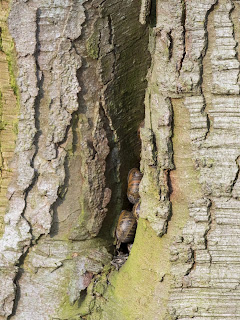By the time I came to Assignment 2 all of these had largely gone by the board. My tutor felt that by basing my work on the photography of one artist (Eliot Porter) was to go down one narrow line of inquiry too early and close off other options. It was also felt that the psychogeography work along the Lincolnshire coast was too similar to a project from PWDP. With this in mind, I favoured the Water Rail Way but decided to focus on the River Witham itself which flows parallel to the Way. This led me to a fascination with the sacredness of the river and to investigate the large number of abbeys in the Witham Valley. My original idea for Assignment 3 was to walk from Lincoln Cathedral along the Viking Way Long Distance Footpath to my home village of Woodhall Spa visiting and photographing all of the Abbeys along the way. Through discussion with my colleagues at our fortnightly 'hangout' sessions I changed direction again. I was asked "Why walk?" to which I didn't have an immediate answer. Having time to reflect on this and researching the work of artists and photographers whose work centred on walking I came to realise that the answer was obvious: walking is what I do and have always done. I walked everywhere as a child and came to love walking for its own sake, especially mountain walking and spent many holidays walking in mountains both in the UK and the Alps and Pyrenees. I have found it to be a meditative experience which allows me to slow down and fully experience the landscape I travel through. Through consulting with my tutor I also decided to leave out the abbey aspect and focus on the walking itself. My one regret is that I didn't come to this realisation earlier and walk the length of the River Witham for Assignment 2.
In order to continue my work into Assignment 4 I intend to continue walking, but also place an emphasis on the question of wilderness as this is what I am exploring in my Contextual Studies extended written project. However, I have thought that I knew where I was going before, so who knows where my investigations will lead me. Interestingly, when I look back to Assignment 1, I note that in Assignment 3 I took many 'Intimate Landscapes' so Eliot Porter's inspiration is still there. For Assignment 4 I plan on looking at Wilderness areas within Lincolnshire, especially 'Edgelands Landscapes', which will bring me back to looking at industrial landscapes and how nature has reclaimed post industrial settings slowly returning the land to a new type of wilderness. Perhaps my work is returning to my starting points?
As far as making 'mistakes' are concerned I would like to think that I would capitalise on it as Paul Graham and Alec Soth did in their work. I am reminded of the 'accidental' work of photographer Gideon Mendel who spoke at a discussion at The Hepworth, Wakefield, that I attended. He had been photographing flood damage and portraits of the people whose homes had been flooded when he dropped his Rollieflex film camera into the water. Although it dried out the resulting corrosion produced some interesting effects that he liked and kept as part of his work. In a similar way photographers have been known to use outdated film stock for the effect it produces.
Although I shall be going out with some objective in mind when I continue with my body of work, I hope that I shall be open to all opportunities, whether they occur naturally or are suggested to me by others. Discussion with my tutor has elicited the response that I still need to take the photography deeper and continue to bring out my personal voice by taking a radically experimental approach, questioning the way I am representing the landscape at a very deep level in order to reach some kind of resolution by the end of the course. So there is the challenge. At the moment I am not sure how to achieve this, but I hope that by keeping an open mind and continued reflection a way forward will emerge.






































